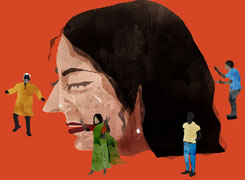30 Year Old Minimalist Budgeting: Am I Allocating My Expenses Correctly?
Ramalingam Kalirajan |8325 Answers |Ask -Follow
Mutual Funds, Financial Planning Expert - Answered on Sep 02, 2024
He has an MBA in finance from the University of Madras and is a certified financial planner.
He is the director and chief financial planner at Holistic Investment, a Chennai-based firm that offers financial planning and wealth management advice.... more
.jpg)
I am 30 years old 90 kids. I have no habit of tobacco or alcohol and teedoler. I am minimalist, having no financial commitment or family commitment. I live in rental accomodation in metro city. I don't have plans for own house or marriage. I allocate my expenses ???? as follows 20% for accommodation 20% medical expenses of my aged parents 20% for food and living expenses 10% for other expenses 10% for mutual fund investments. Please give insight, should I reallocate the proportion
Accommodation: 20%
Medical Expenses for Aged Parents: 20%
Food and Living Expenses: 20%
Other Expenses: 10%
Mutual Fund Investments: 10%
Your priorities clearly include taking care of your parents, managing daily living costs, and investing for the future. Let’s evaluate this allocation and explore potential adjustments that could optimize your financial situation.
Assessing Each Allocation
1. Accommodation (20%)
Spending 20% of your income on rent in a metro city is quite reasonable. This allocation ensures you have a comfortable living arrangement without overextending yourself. Since you have no plans for purchasing a home, maintaining this proportion seems appropriate.
2. Medical Expenses for Aged Parents (20%)
Allocating 20% of your income towards your parents’ medical expenses shows your commitment to their well-being. This is a necessary and thoughtful allocation, especially as healthcare costs can be unpredictable. However, it might be worth considering if this expense is consistently high or if there’s room for optimization. For instance, ensuring they have comprehensive health insurance could reduce this burden and provide financial relief.
3. Food and Living Expenses (20%)
Spending 20% on food and living expenses is quite standard. As a minimalist, you likely have a good handle on managing these costs. If you find yourself consistently under budget in this category, you could consider reallocating some of this percentage towards savings or investments.
4. Other Expenses (10%)
This category typically covers miscellaneous expenses such as entertainment, travel, and other discretionary spending. Keeping this at 10% aligns with your minimalist approach. However, if you rarely spend on such extras, this allocation might be higher than necessary. You could reduce this category and redirect funds towards other financial goals.
5. Mutual Fund Investments (10%)
Investing 10% of your income in mutual funds is a good start, especially given your age. Starting early allows you to take advantage of compounding over time. However, considering your lack of major financial commitments and minimalist lifestyle, you may have the capacity to increase this percentage to build wealth more aggressively.
Potential Reallocations
Based on your situation, here are a few suggestions for reallocation:
Increase Investment Allocation: Given that you have no immediate financial commitments, consider increasing your investment allocation from 10% to 20% or even higher. This will allow you to build a substantial corpus over time, providing you with financial security and freedom in the future.
Emergency Fund: It’s important to ensure you have an emergency fund that covers at least 6-12 months of your expenses. If you don’t already have this, you could allocate a portion of your savings to build this fund. Once established, any surplus can go into your investment portfolio.
Review Medical Expenses: If your parents’ medical expenses are consistently high, it might be worth exploring health insurance options that cover more of their needs. This could potentially reduce the percentage allocated to this category, freeing up funds for other areas.
Reduce Miscellaneous Expenses: If you find that you don’t need the full 10% for miscellaneous expenses, consider reducing this allocation. The saved funds could be redirected towards investments or building your emergency fund.
Consider Retirement Planning: Although you are young, it's never too early to start planning for retirement. If you haven't started a retirement fund or NPS, this could be a good time to allocate a portion of your income towards securing your future.
A Revised Financial Plan
Here’s a potential reallocation based on the insights provided:
Accommodation: 20% (unchanged)
Medical Expenses for Parents: 15% (if optimized through insurance)
Food and Living Expenses: 20% (unchanged)
Other Expenses: 5% (reduced from 10%)
Mutual Fund Investments: 25% (increased from 10%)
Emergency Fund: 5% (until adequately funded)
Retirement Savings: 10% (new allocation)
This reallocation increases your focus on wealth building and long-term security while ensuring your essential needs and responsibilities are covered.
Final Insights
Your current allocation reflects a responsible approach to your finances, especially with your commitment to supporting your parents and living a minimalist lifestyle. However, with a few adjustments, you can potentially accelerate your wealth-building journey and prepare better for the future.
Increasing your investment allocation and focusing on building an emergency fund and retirement savings can provide you with greater financial security. By reallocating funds from less critical areas, you can ensure that your money is working harder for you, setting you up for a more comfortable and secure future.
Best Regards,
K. Ramalingam, MBA, CFP
Chief Financial Planner,
www.holisticinvestment.in
You may like to see similar questions and answers below
Ramalingam Kalirajan |8325 Answers |Ask -Follow
Mutual Funds, Financial Planning Expert - Answered on May 09, 2024
Ramalingam Kalirajan |8325 Answers |Ask -Follow
Mutual Funds, Financial Planning Expert - Answered on Jun 21, 2024
Ramalingam Kalirajan |8325 Answers |Ask -Follow
Mutual Funds, Financial Planning Expert - Answered on Jun 22, 2024
Samraat Jadhav |2272 Answers |Ask -Follow
Stock Market Expert - Answered on Jul 26, 2024
Milind Vadjikar |1210 Answers |Ask -Follow
Insurance, Stocks, MF, PF Expert - Answered on May 08, 2025
Milind Vadjikar |1210 Answers |Ask -Follow
Insurance, Stocks, MF, PF Expert - Answered on May 08, 2025
Prof Suvasish Mukhopadhyay |625 Answers |Ask -Follow
Career Counsellor - Answered on May 08, 2025
Ravi Mittal |583 Answers |Ask -Follow
Dating, Relationships Expert - Answered on May 08, 2025
Ravi Mittal |583 Answers |Ask -Follow
Dating, Relationships Expert - Answered on May 08, 2025
Mayank Chandel |2257 Answers |Ask -Follow
IIT-JEE, NEET-UG, SAT, CLAT, CA, CS Exam Expert - Answered on May 08, 2025
Mayank Chandel |2257 Answers |Ask -Follow
IIT-JEE, NEET-UG, SAT, CLAT, CA, CS Exam Expert - Answered on May 08, 2025
Mayank Chandel |2257 Answers |Ask -Follow
IIT-JEE, NEET-UG, SAT, CLAT, CA, CS Exam Expert - Answered on May 08, 2025
Prof Suvasish Mukhopadhyay |625 Answers |Ask -Follow
Career Counsellor - Answered on May 08, 2025
Nayagam P P |4489 Answers |Ask -Follow
Career Counsellor - Answered on May 08, 2025



























